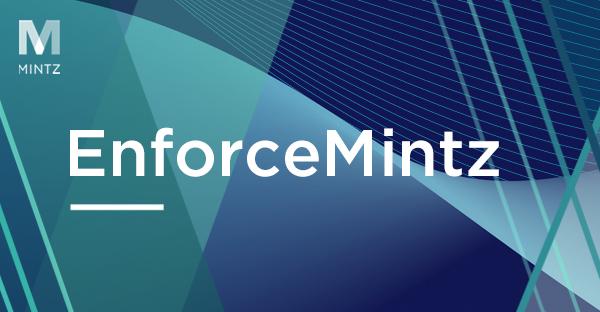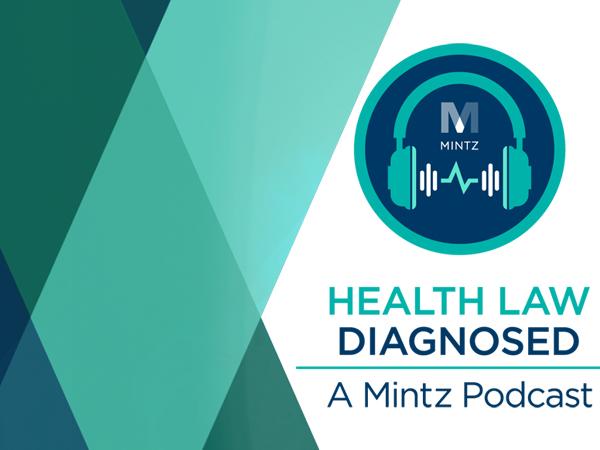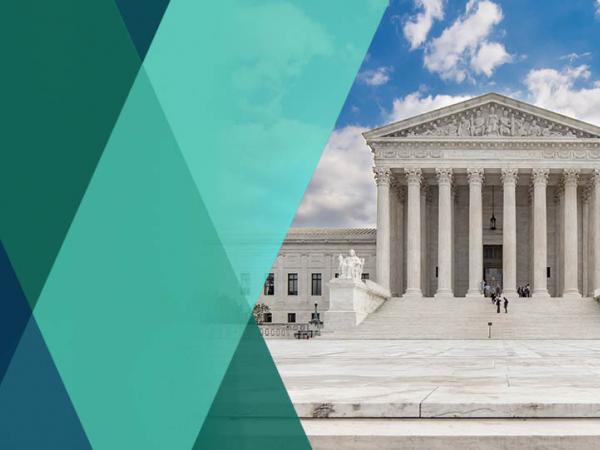
Health Care
Viewpoints
Filter by:
HHS Restructuring and Workforce Reductions – Key Implications for the Health Care Industry
April 14, 2025 | Blog | By Joanne Hawana, Jean D. Mancheno, Lauren Moldawer
As spring arrived in the mid-Atlantic region, the Department of Health and Human Services (HHS) under Robert F. Kennedy, Jr. followed through with a previously announced Reduction in Force (RIF) that reduced the department’s workforce by a reported 10,000 employees and started the process of restructuring the organization as a whole. Now that the dust is starting to settle, we are beginning to analyze the RIFs and how they could impact key health care stakeholders, including Medicare Advantage Plans, providers, and biopharmaceutical and medical device manufacturers. This post provides a brief overview of the restructuring to date, HHS’s reduction in workforce, and their potential impacts. We will continue to monitor these developments and provide future updates to Mintz clients and friends.
A Texas Federal Court Sides with Laboratories, But There May Be Unintended Consequences for FDA
April 10, 2025 | Blog | By Benjamin Zegarelli, Joanne Hawana
The obvious result of the legal shootout between the U.S. Food & Drug Administration (FDA) and clinical laboratory trade associations, the American Clinical Laboratory Association and the Association for Molecular Pathology, in the Eastern District of Texas to determine whether the Federal Food, Drug, and Cosmetic Act (FD&C Act) permits the agency to regulate laboratory developed tests (LDTs) is a complete victory for clinical laboratories. The U.S. district judge’s decision, issued on March 31, 2025, vacated the May 2024 final rule through which FDA sought to specify that LDTs are agency-regulated in vitro diagnostic products (IVDs) and to describe a plan for phasing-in enforcement of existing medical device regulations for such products over four years (see our previous posts on the LDT final rule here and here). In adopting the plaintiffs’ arguments wholesale, however, the judge created some incongruities in the relevant regulatory frameworks, as well as several quandaries for FDA and the clinical laboratory industry going forward. These inconsistencies could have greater consequences down the road if the Trump administration decides not to appeal the ruling.
New York Department of Health Issues Long-Awaited FAQs for New York’s Disclosure of Material Transactions Law
April 9, 2025 | Blog | By Jean D. Mancheno, Cody Keetch, Pamela Polevoy
The first quarter of 2025 has been eventful for New York’s Disclosure of Material Transactions Law. As discussed in our recent blog post, the proposed Fiscal Year 2026 New York State Executive Budget (FY 26 Executive Budget) contains an amendment that would alter reporting parties’ notice requirements, extend waiting periods, and increase oversight of material health care transactions by the New York State Department of Health (DOH). Now, nearly a year and a half after the Disclosure of Material Transactions Law took effect, DOH has published Public Health Law Article 54-A, Material Transactions Frequently Asked Questions (FAQs) on its website. The law currently requires “health care entities” engaged in a “material transaction” to provide written notice of the transaction to DOH at least 30 days before the transaction closing as well as notice to DOH upon the transaction closing. With the FAQs, DOH seeks to “provide responses to common questions the Department has received to date” and clarify health care entities’ obligations under the Disclosure of Material Transactions Law. The FAQs expand on the statute’s language, providing guidance on what “health care entities” are subject to the law, what constitutes a “material transaction,” how a transaction’s impact will be assessed, and the ability to comment on a proposed transaction.
CMS’s ACA Marketplace Integrity and Affordability Proposed Rule – What It Could Mean for Health Plans
March 24, 2025 | Blog | By Lauren Moldawer, Xavier Hardy, Stephnie John, Madison Castle
Earlier this month, the Centers for Medicare & Medicaid Services (CMS) released its 2025 Marketplace Integrity and Affordability Proposed Rule (Proposed Rule), proposing a number of enrollment and eligibility policies impacting both Federal and State Exchanges. While CMS frames these policies as necessary to combat fraud and abuse, the impact will be a reduction in enrollment in the ACA Marketplace – with the Proposed Rule estimating that between 750,000 and 2 million fewer individuals enroll in health insurance plans on the Exchanges in 2026.
This blog outlines the major provisions of the Proposed Rule, followed by a discussion of their potential impact on plans participating in the ACA Marketplace.
What to Take Away from CMMI’s Early Termination of Four Demonstration Models
March 19, 2025 | Blog | By Xavier Hardy
On March 12, 2025, in one of the Trump Administration’s first actions with respect to the Center for Medicare and Medicaid Innovation (CMMI), CMMI announced that it would prematurely terminate four alternative payment model (APM) demonstration models by December 31, 2025. CMMI’s decision was not entirely unexpected. In response to a 2021 report from a Congressional advisory committee recommending that CMMI “streamline” its portfolio of demonstrations, the Biden Administration initiated a 10-year “strategic refresh” of CMMI. Similarly, a critical report from the Congressional Budget Office (CBO) about the net cost initiated a wave of criticism from Republicans. Combined with the Trump Administration’s hyperfocus on reducing government spending (based on CMMI’s estimation, terminating the demonstrations early will save the federal government $750 million), it is not particularly surprising that CMMI was targeted for some cuts.
FDA’s Backup LDT Enforcement Method: Specimen Collection Kits
March 13, 2025 | Blog | By Benjamin Zegarelli, Joanne Hawana
We have written at length about the U.S. Food and Drug Administration’s (FDA’s) actions to promulgate regulations specifying the agency’s authority to regulate laboratory developed tests (LDTs) as medical devices and to phase out the agency’s historical approach of enforcement discretion towards such tests (see here, here, here, and here). However, one infrequently considered regulatory compliance issue for LDTs is their reliance on separate specimen collection devices or convenience kits. All LDTs require the use of some form of biological specimen, such as blood or saliva, which may be collected by health care professionals in a clinical setting or by consumers in their homes before being submitted to a laboratory for testing.
Will New York Be Next to Regulate Specifically Personal Health Information to Further, and Possibly Re-Write, a New Paradigm of State-Level Health Data Regulation?
February 26, 2025 | Blog | By Scott Lashway, Matthew Stein, Cassandra Paolillo, Kayla LaRosa
The following is a summary comparison between the currently passed NY HIPA and WA MHMDA.
FDA Continues Push to Improve Food Labeling Practices in the United States
February 21, 2025 | Blog | By Joanne Hawana, Jean D. Mancheno
In September 2022, former President Biden convened the White House Conference on Hunger, Nutrition, and Health, during which the White House introduced its National Strategy on Nutrition and Health (National Strategy). The National Strategy called for creating more accessible food labeling practices to empower consumers to make healthier choices, among other laudable public health-focused goals. Prior to the January 2025 transition from the Biden to the Trump administration, the Food and Drug Administration (FDA) took concrete steps to address this particular National Strategy priority through both formal rulemaking and informal guidance. This blog post summarizes FDA's actions at the end of the Biden administration intended to modernize food labeling practices and move them forward in today’s more consumer-focused marketplace.
First Circuit Adopts “But-For” Causation Standard for False Claims Act Cases Based on Anti-Kickback Statute Violations
February 20, 2025 | Blog | By Grady Campion, Melody Mathewson
In United States v. Regeneron Pharmaceuticals, Inc., the First Circuit joined the emerging majority view that False Claims Act (FCA) claims based on violations of the Anti-Kickback Statute (AKS) require a showing of “but-for” causation. As we previously reported, the Sixth Circuit and the Eighth Circuit have also held that the stricter “but-for” causation standard applies to AKS-based FCA claims.
New York Proposes Expansion of Disclosure Requirements for Material Health Care Transactions
February 14, 2025 | Blog | By Pamela Polevoy, Cody Keetch, Jean D. Mancheno
Governor Kathy Hochul released the proposed Fiscal Year 2026 New York State Executive Budget on January 21, 2025 (FY 26 Executive Budget). The FY 26 Executive Budget contains an amendment to Article 45-A of New York’s Public Health Law (hereinafter, the Disclosure of Material Transactions Law), which has been in effect since August 1, 2023. The law currently requires parties to a “material transaction” to provide 30 days pre-closing as well as post-closing notice to the New York State Department of Health (DOH). Since the law has taken effect, DOH has received notice of 9 material transactions, the details of which are listed on its website. If enacted, the amendment will change the reporting parties’ notice requirement, extend waiting periods, and increase DOH’s oversight of material health care transactions.
PBM Policy and Legislative Update — Winter 2025
February 10, 2025 | Blog | By Theresa Carnegie, Tara E. Dwyer, Rachel A. Alexander, Lauren Moldawer, Bridgette Keller, Priyanka Amirneni, Madison Castle, David Gilboa, Xavier Hardy, Samantha Hawkins, Stephnie John, Alison H. Peters, Pamela Polevoy, Abdie Santiago, Hassan Shaikh, Sophia Temis
The PBM Policy and Legislative Update — Winter 2025 edition builds upon prior PBM Policy and Legislative Updates and summarizes activity from October through December (2024) that affects the PBM industry. It highlights (i) federal activities, (ii) state activities, and (iii) other noteworthy events and trends affecting the PBM industry.
EnforceMintz — Health Care False Claims Act Statistical Year in Review
February 3, 2025 | Blog
Mintz’s annual report on False Claims Act case activity analyzes data from DOJ and the firm’s Health Care Qui Tam Database, and explores the 2024 record high in FCA case activity, the moderate increase in health care–related activity.
Massachusetts Aligns with National Trends and Enacts Sweeping Legislation to Regulate Pharmaceutical Benefit Managers
January 24, 2025 | Blog | By Theresa Carnegie, Bridgette Keller, David Gilboa, Priyanka Amirneni
On the heels of a nationwide push to regulate pharmacy benefit managers (PBMs), Massachusetts enacted a landmark piece of legislation to increase transparency and oversight within the pharmaceutical supply chain, specifically targeting PBMs. Signed into law by Governor Healey on January 9, 2025, the comprehensive bill, titled “An Act Relative to Pharmaceutical Access, Costs and Transparency” (the Act), introduces a multifaceted approach that aims to reduce prescription drug costs, enhance data transparency, and impose stronger oversight of PBMs and pharmaceutical manufacturers.
California Attorney General Issues Warning on Artificial Intelligence in Health Care
January 22, 2025 | Blog | By Daniel Cody, Kathryn Edgerton, Hassan Shaikh
On January 13, 2025, California Attorney General Rob Bonta (the California AG) issued two Legal Advisories regarding the utilization of artificial intelligence (AI). The first Legal Advisory provides guidance to consumers and entities developing, selling, and using AI describing their rights and obligations under California law. The second Legal Advisory, entitled Application of Existing California Law to Artificial Intelligence in Healthcare (the Health Care Legal Advisory), is expressly directed at health care providers, insurers, vendors, investors, and other health care entities who develop, sell, and use AI and other automated decision-making tools.
New York Employers Must (Again) Provide Reproductive Health Notice of Rights in Employee Handbooks Following Second Circuit Ruling
January 21, 2025 | Blog | By Talia Weseley, Corbin Carter, Michael Arnold
New York employers are – once again – required to provide employees with notice regarding New York’s reproductive health decision making protections. The U.S. Court of Appeals for the Second Circuit vacated a lower court’s permanent injunction of a New York law that requires employers to include a notice in their employee handbooks regarding the State’s prohibition of discrimination based on reproductive health choices.
Health Care Enforcement Trends & 2025 Outlook
January 17, 2025 | Blog | By Karen Lovitch, Samantha Kingsbury, Keshav Ahuja, Eoin Beirne, Grady Campion, Daniel Cody, Tara E. Dwyer, Laurence Freedman, Hope Foster, Jane Haviland, Nicole Henry, Caitie Hill, Robert Kidwell, Nick A. LaPalme, Scott Lashway, Kevin McGinty, Payton Thornton, Matthew Stein, Rachel Yount
Our 2025 edition of EnforceMintz reflects on health care enforcement trends, predicts how health care enforcement may evolve, and offers practical guidance about what these trends and predictions mean for health care providers, payors, and other stakeholders.
EnforceMintz — FCA Enforcement in Value-Based Care Arrangements Heated Up in 2024 and Likely to Remain a Priority in 2025
January 16, 2025 | Blog | By Grady Campion, Karen Lovitch
Government scrutiny of value-based care (VBC) health care delivery models is expected to increase as VBC adoption grows. In 2024, the DOJ announced a large FCA settlement with a VBC primary care practice, and HHS’s Office of Inspector General issued a Special Fraud Alert focusing on VBC business arrangements.
EnforceMintz — Additional Health Care Provider Joins the OIG’s “Heightened Scrutiny” List in 2024
January 16, 2025 | Blog | By Hope Foster
In 2024, the HHS Office of Inspector General added the University of Colorado Health d/b/a/ UCHealth, an established provider, to the Heightened Scrutiny list after UCHealth settled an FCA case for $23 million, without an admission of wrongdoing.
EnforceMintz — Don’t Forget Your Other Regulators: Consumer Protection Enforcement in Health Care Markets
January 16, 2025 | Blog | By Robert Kidwell, Samantha Kingsbury, Payton Thornton
In 2024, the FTC and state attorneys general pursued various theories of liability against a diverse array of entities offering health care or health care–related services, and employed numerous different enforcement tools and partnerships. We expect that the agencies will continue developing these strategies in 2025.
EnforceMintz — Long Tail of Pandemic Fraud Schemes Will Likely Result in Continued Enforcement for Years to Come
January 16, 2025 | Blog | By Jane Haviland
In 2024, the COVID-19 Fraud Enforcement Task Force, in conjunction with five COVID Fraud Enforcement Strike Forces and other government agencies, has resolved many significant criminal and civil pandemic fraud cases. More civil pandemic fraud enforcement actions and continuing criminal actions are expected in 2025.
Explore Other Viewpoints:
- Data Centers & Digital Infrastructure
- AI: The Washington Report
- Antitrust
- Appellate
- Arbitration, Mediation & Alternate Dispute Resolution
- Artificial Intelligence
- Awards
- Bankruptcy & Restructuring
- California Land Use
- Cannabis
- Class Action
- Complex Commercial Litigation
- Construction
- Consumer Product Safety
- Corporate Governance (ESG)
- Cross-Border Asset Recovery
- DEI Legal Developments
- Debt Financing
- Direct Investing (M&A)
- Diversity
- EB-5 Financing
- Education & Nonprofits
- Employment
- EnforceMintz
- Environmental (ESG)
- Environmental Enforcement Defense
- Environmental Law
- Environmental, Social, and Corporate Governance (ESG)
- FDA Regulatory
- False Claims Act
- Federal Circuit Appeals
- Financial Institution Litigation
- Government Law
- Growth Equity
- Health Care
- Health Care Compliance, Fraud and Abuse, & Regulatory Counseling
- Health Care Enforcement & Investigations
- Health Care Transactions
- Health Information Privacy & Security
- IP Due Diligence
- IPRs & Other Post Grant Proceedings
- Immigration
- Impacts of a New US Administration
- Insolvency & Creditor Rights Litigation
- Institutional Investor Class Action Recovery
- Insurance & Financial Services
- Insurance Consulting & Risk Management
- Insurance and Reinsurance Problem-Solving & Dispute Resolution
- Intellectual Property
- Investment Funds
- Israel
- Licensing & Technology Transactions
- Life Sciences
- Litigation & Investigations
- M&A Litigation
- ML Strategies
- Medicare, Medicaid and Commercial Coverage & Reimbursement
- Mergers & Acquisitions
- Patent Litigation
- Patent Prosecution & Strategic Counseling
- Pharmacy Benefits and PBM Contracting
- Portfolio Companies
- Privacy & Cybersecurity
- Private Client
- Private Equity
- Pro Bono
- Probate & Fiduciary Litigation
- Products Liability & Complex Tort
- Projects & Infrastructure
- Public Finance
- Real Estate Litigation
- Real Estate Transactions
- Real Estate, Construction & Infrastructure
- Retail & Consumer Products
- Securities & Capital Markets
- Securities Litigation
- Social (ESG)
- Special Purpose Acquisition Company (SPACs)
- Sports & Entertainment
- State Attorneys General
- Strategic IP Monetization & Licensing
- Sustainable Energy & Infrastructure
- Tax
- Technology
- Technology, Communications & Media
- Technology, Communications & Media Litigation
- Trade Secrets
- Trademark & Copyright
- Trademark Litigation
- Unified Patent Court (UPC)
- Value-Based Care
- Venture Capital & Emerging Companies
- White Collar Defense & Government Investigations
- Women's Health and Technology












